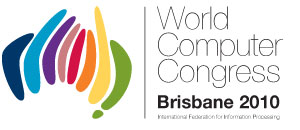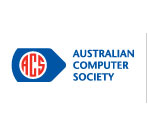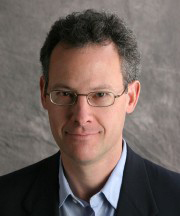 |
Bringing the Cloud Down to Earth
Cloud computing represents the biggest revolution in information technology since the arrival of the personal computer more than 30 years ago. But "the cloud" has also become wrapped in hype. Nicholas Carr, author of the influential and best-selling books Does IT Matter?, The Big Switch, and The Shallows, will go beyond the hype to place cloud computing in a historical, economic, and social context. He will show how the development of the cloud is following an often-repeated technological and business pattern, seen for example 100 years ago in the shift from proprietary power generation to the utility electrical system. By ceding control over infrastructure, the users of utility systems reduce capital outlays and risk and gain benefits in flexibility and scale economies. Carr will also examine the barriers to adoption of the cloud, the emerging patterns of cloud use in both business and personal cloud use, and some of the broader consequences, both good and bad, for society and culture. Biography
Nicholas Carr writes on the social, economic, and business implications of technology. He is the author of the 2008 Wall Street Journal bestseller The Big Switch: Rewiring the World, from Edison to Google, which is "widely considered to be the most influential book so far on the cloud computing movement," according the Christian Science Monitor. His earlier book, Does IT Matter?, published in 2004, "lays out the simple truths of the economics of information technology in a lucid way, with cogent examples and clear analysis," said the New York Times. He is working on a new book, The Shallows: What the Internet Is Doing to Our Brains, which will be published in 2010. Carr's books have been translated into more than a dozen languages. Carr has written for many periodicals, including The Atlantic Monthly, The New York Times Magazine, Wired, The Financial Times, Die Zeit, The Futurist, and Advertising Age, and has been a columnist for The Guardian and The Industry Standard. His much-discussed essay "Is Google Making Us Stupid?," which appeared as the cover story of the Atlantic Monthly's Ideas issue in the summer of 2008, has been collected in three popular anthologies: The Best American Science and Nature Writing, The Best Technology Writing, and The Best Spiritual Writing. Carr has written a personal blog, Rough Type, since 2005. He is a member of the Encyclopaedia Britannica's editorial board of advisors and is on the steering board of the World Economic Forum's cloud computing project. Earlier in his career, Carr was executive editor of the Harvard Business Review and a principal at Mercer Management Consulting. Carr has been a speaker at MIT, Harvard, Wharton, the Kennedy School of Government, NASA, and the Federal Reserve Bank of Dallas as well as at many industry, corporate, and professional events throughout the Americas, Europe, and Asia. He holds a B.A. from Dartmouth College and an M.A., in English and American literature and language, from Harvard University. |
 |
National Knowledge Network of India: An Instrument of Social Change
National Knowledge Network (NKN) of India integrates a spectrum of science and technology institutions that are basically the creators of knowledge spanning science and technology, education, health, and agriculture. For the first time India is bringing together over 100,000 scientists, engineers, educators, and researchers in to one comprehensive network seamlessly. India, the nation with 1.3 billion citizens is pinning hope on the paradigm shift in everything that is likely to emerge in the coming years. NKN is the most comprehensive network designed so far in the world, with a sharp focus on human development – improving education, healthcare, and agriculture. NKN is an ultra high bandwidth network with a fully connected super core, multi-homed distribution as well as edges, that connects 1500 institutions directly and 30,000 institutions indirectly at speeds exceeding 1 Gps. NKN core itself has capacity in multiples of 10 Gps and will scale progressively to Terabits per second in the next few years. NKN is characterised by high bandwidth and low latency enabling annihilation of distance and instantaneous observation of events. NKN is present across India with a total of 650 points of presence and is within a few kilometres of every hamlet! With the excellent Indian experience in the mobile telephony technology, we believe that India is poised for a major change in the next few years, based on NKN reach and speed. The Plenary Keynote will cover different aspects of NKN from concept to realisation. The speaker is the Chief Architect of NKN, who also Chairs the Technical Advisory Committee of NKN. Biography
Professor S V Raghavan is the author of the Opinon Article, “Gigabit and Gandhi”, published in The Hindu, January 2006. He is the primary author of the Report on E-Infrastructure for Science and Technology on behalf of the Office of the Principal Scientific Advisor to Government of India. The report is a joint effort between the Office of PSA and National Knowledge Commission (NKC). The Prime Minister has since approved the report and the President of India inaugurated the National Knowledge Network (NKN) in April 2009. Compared with AARNet of Australia, REN of Japan, GEANT of Europe, and Internet2 of the USA, NKN is more advanced in speed, reach, and heterogeneity. Professor Raghavan is the consortium leader for the Collaborative Directed Basic Research (CDBR) Project spread across eight nodes. The goal is to conduct basic research collaboratively in a specific area of national interest – smart and secure environment, using Information and Communication Technology. He is the Program Director for the joint effort between India and Australia for Critical Information Infrastructure Protection (CIIP) against Distributed Denial of Service (DDoS) attacks. Professor Raghavan is the President of the Indo-Australian Information Technology Security. His research interests span the spectrum of Computer Science and Engineering. His recent work on IR based non-invasive screening for breast cancer is very promising. Professor Raghavan has published serveral research papers, guided doctoral level research students, edited conference proceedings, and published books. He is a gifted teacher, noted orator, voracious reader, avid writer, able administrator, active researcher, talented professional, and a team worker. |
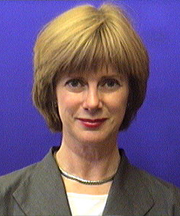 |
Envisioning work with Technology
Many years ago, Arnie Lund noted that “if technology doesn’t work for people, it doesn’t work.” Lund’s quote is particularly important for information and communication technology (ICT), where developers have almost arbitrary discretion in how they can configure components and in how they can design people’s interaction with the technology. So how can we ensure that ICT works for people, particularly in complex systems such as aviation, healthcare, stocktrading, and so on? Mashups certainly “work” for their creators, because they very much under their creator’s immediate control, but they are seldom trusted for safety-critical systems. ICT underlying complex systems must be developed in a way that handles risk effectively. This introduces challenges that make it more difficult to ensure that the technology “works for people”. We encounter the so-called “envisioned world” problem—the problem of how to achieve useful predictions of how a new or transformed system might run, so we can forestall problems and anticipate infrastructure changes that will be needed. We need processes for envisionment that do not rely on having full implementations in place. In this address I touch on some key forms of envisionment, in places drawing analogies with the dramatic arts. At the most basic level, documents serve a purpose akin to dramatic plot and background “location” research. Low-level models of human interaction with the new technology support a first-level envisionment and are akin to a staging or a screenplay—they start to reveal some issues. Walkthroughs are akin to blocking out scenes, where intended and unintended consequences start to emerge more forcefully. Human-in-the-loop simulations invite users to act with a new technology, rather like members of a group improvisation. Finally, pilot deployment introduces the high stakes and consequence of real work. In this talk I give examples of forms of envisionment of ICT that have proven to be particularly useful for making sure that technology “works for people”—even in some of the most complex systems that humans design. Biography
Penelope Sanderson is Professor of Cognitive Engineering and Human Factors at The University of Queensland. She is Director of the ARC Key Centre for Human Factors and holds appointments in The University of Queensland’s School of Information Technology and Electrical Engineering, School of Psychology, and School of Medicine. Professor Sanderson has conducted human factors research and consulting activities in the USA, Canada, and Australia, focusing human interaction with complex systems. Her specific interests are human-system integration in power generation, transmission and distribution, air traffic control, air defence, and critical care medicine. She is the Research Leader in Cognitive and Organisational Systems Engineering (COSE) for NICTA in Australia and is also QRL Research Group Manager for NICTA's Making Sense of Data theme. She is the author of over 130 refereed papers (five receiving international paper prizes) and over 80 further papers on human factors. Professor Sanderson is a Fellow of the Academy of the Social Sciences in Australia and in 2004 she received the Distinguished International Colleague Award from the USA-based Human Factors and Ergonomics Society. |
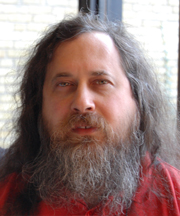 |
Toward a Just Digital Society
Activities directed at "including" more people in the use of digital technology are predicated on the assumption that such inclusion is invariably a good thing. It appears so when judged solely by immediate practical convenience. However, if we also judge in terms of human rights whether digital inclusion is good or bad, depends on what kind of digital world we are to be included in. If we wish to work towards digital inclusion as a goal, it behooves us to make sure it is the good kind. Biography
Richard Matthew Stallman is an American software freedom activist and computer programmer. In September 1983, he launched the GNU Project to create a free Unix-like operating system, and has been the project's lead architect and organiser. With the launch of the GNU Project, he initiated the free software movement; in October 1985 he founded the Free Software Foundation. Stallman pioneered the concept of copyleft and he is the main author of several copyleft licenses including the GNU General Public License, the most widely used free software license. Since the mid-1990s, Stallman has spent most of his time advocating for free software, as well as campaigning against both software patents and what he sees as excessive extension of copyright laws. Stallman has also developed a number of pieces of widely used software, including the original Emacs, the GNU Compiler Collection, the GNU Debugger, and many tools in the GNU Coreutils. He co-founded the League for Programming Freedom in 1989. |
 |
Shifting the paradigm of Government ICT
How do you maximise the reality behind technology such as Cloud computing yet still retail the balance between localism and centralisation? Biography
John was appointed Her Majesty’s Government Chief Information Officer and Senior Information Risk Officer on the 5th June 2006. Prior to this he was the Director General of Criminal Justice IT (CJIT) from February 2004. He has a background of over 25 years’ experience in IT and major transformation programmes. John has worked in the engineering and financial service industries and has extensive experience in delivering IT-enabled change. He has had many and varied roles at Director level, including as a CIO twice in different organisations, as well as Customer Services Director, Operations Director and a Managing Director of a multi-channel £20bn business. His experience of running large, national businesses means John has the track record and insight to lead major IT-enabled transformation programmes which deliver clear business benefits. John leads the work of the CIO Council in delivering the Government’s strategy for the transformation of public services enabled by technology. John also provides leadership to the IT Profession across the wider public sector and enables public service transformation through the strategic deployment of technology which includes driving the use of shared services. John acts as the ‘face’ of UK Government IT both at home and abroad. John is a frequent conference speaker on transformational change and leadership in the UK and abroad. In his spare time he looks after his farm protecting rare breed sheep and pigs. |
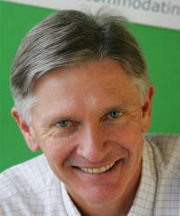 |
The Simple Art of Entrepreneurship in the Age of Rampant Technology: How the Fundamentals Never Change.
Digital technology offers an apparently never-ending set of opportunities for changing business and society. Technology researchers and entreprenuers make the choices that impact all of us. Can we do better? Biography
|
